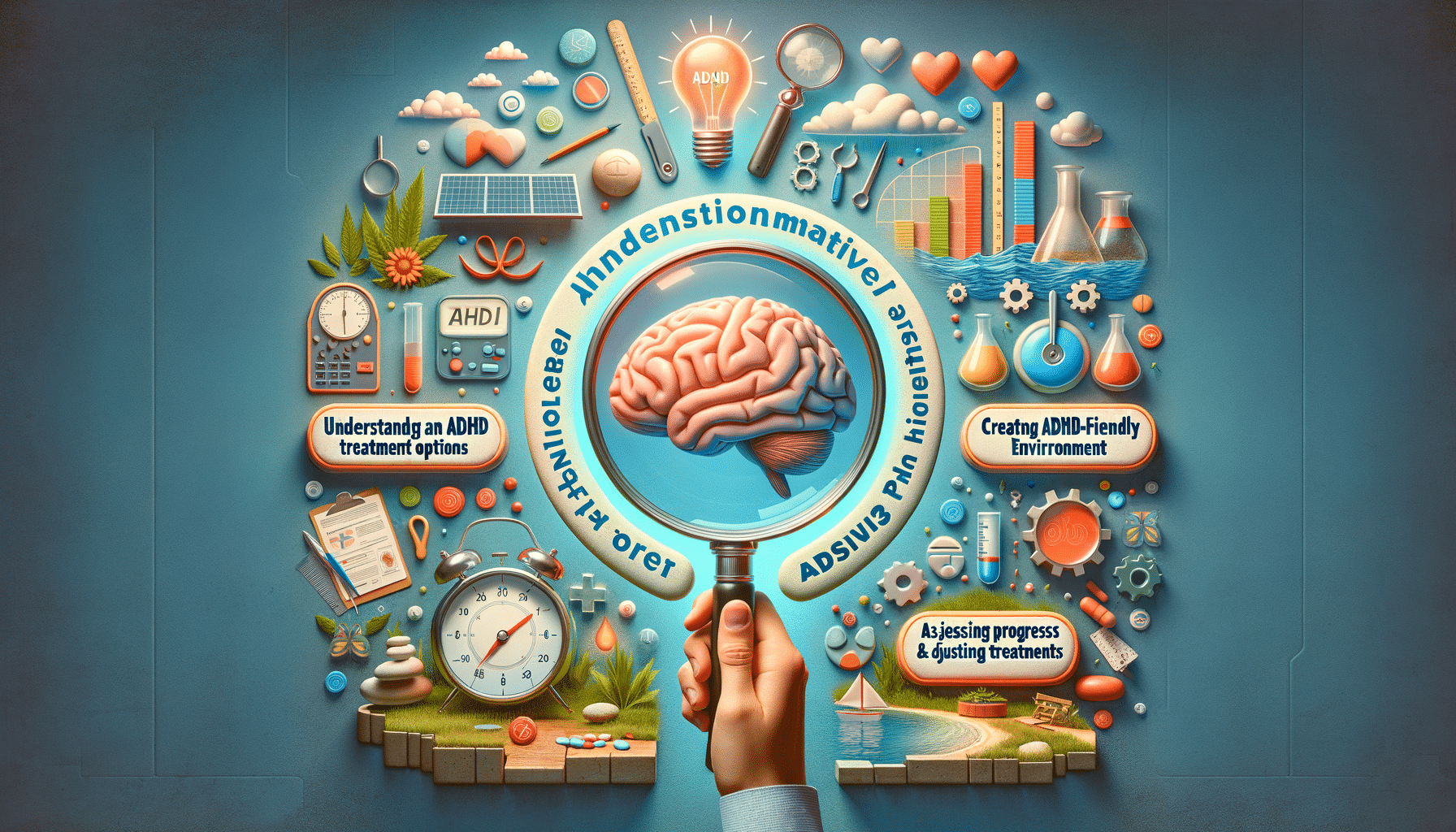
Analysis of current ADHD treatments and practices
Understanding ADHD Treatment Options
Attention Deficit Hyperactivity Disorder (ADHD) is a complex condition that affects both children and adults. Understanding the various treatment options available is essential for managing the symptoms effectively. The treatment plans for ADHD generally include a combination of medication, behavioral therapy, and lifestyle adjustments. Each of these options has distinct advantages and is chosen based on the individual’s specific needs and circumstances.
Medications are often the first line of treatment and can be broadly categorized into stimulants and non-stimulants. Stimulants, such as methylphenidate, are known for their ability to increase concentration and reduce impulsivity and hyperactivity. Non-stimulant medications, such as atomoxetine, offer an alternative for those who may not respond well to stimulants or experience severe side effects. Both types of medication require careful monitoring by healthcare professionals to ensure efficacy and safety.
Behavioral therapy is another crucial component of ADHD management. This approach focuses on modifying behavior through positive reinforcement, structure, and consistent routines. Cognitive-behavioral therapy (CBT) can also be effective, particularly for older children and adults, by helping them develop coping strategies and problem-solving skills.
In addition to medication and therapy, lifestyle changes play a significant role in managing ADHD. These can include dietary adjustments, regular physical activity, and mindfulness practices. A balanced diet rich in omega-3 fatty acids, for example, has been shown to support brain health, while exercise can help reduce symptoms by increasing dopamine levels in the brain.
Ultimately, the choice of treatment should be personalized, taking into account the individual’s age, the severity of symptoms, and any co-existing conditions. Collaboration between healthcare providers, patients, and families is vital to develop a comprehensive plan that addresses all aspects of the individual’s life.
Creating an ADHD-Friendly Environment
An ADHD-friendly environment is crucial for individuals with Attention Deficit Hyperactivity Disorder to thrive. Creating such an environment involves making adjustments at home, school, and work to reduce distractions and enhance focus. These changes are not only beneficial for those with ADHD but can also improve the overall productivity and well-being of everyone involved.
At home, organization is key. Designate specific areas for homework, play, and relaxation, ensuring each space is free from unnecessary distractions. Use organizational tools such as calendars, to-do lists, and timers to help manage time effectively. Labeling items and creating a structured routine can also aid in reducing chaos and promoting a sense of order.
Schools play a pivotal role in supporting students with ADHD. Teachers can implement strategies such as seating students away from windows and doors to minimize distractions, providing clear and concise instructions, and allowing for movement breaks to help manage hyperactivity. Collaborative efforts between parents, teachers, and school counselors can lead to the development of individualized education plans (IEPs) that cater to the student’s unique needs.
In the workplace, individuals with ADHD may benefit from a flexible work schedule, noise-canceling headphones, and a clutter-free desk. Employers can support employees by providing clear expectations, regular feedback, and opportunities for skill development. Encouraging a culture of understanding and inclusivity can significantly enhance the work environment for those with ADHD.
Creating an ADHD-friendly environment is an ongoing process that requires patience, creativity, and collaboration. By making these adjustments, individuals with ADHD can better manage their symptoms and lead fulfilling lives.
Assessing Progress and Adjusting Treatments
Monitoring progress and making necessary adjustments are integral parts of managing Attention Deficit Hyperactivity Disorder (ADHD). Regular assessments help determine the effectiveness of current treatment plans and identify areas that may require change. This ongoing evaluation ensures that individuals with ADHD receive the support they need to succeed.
Progress can be assessed through various means, including regular check-ins with healthcare providers, feedback from teachers and family members, and self-assessment tools. These evaluations should focus on key areas such as academic performance, social interactions, and emotional well-being. Tracking changes in these areas over time can provide valuable insights into the effectiveness of treatment strategies.
Adjusting treatments may involve altering medication dosages, incorporating new therapeutic techniques, or modifying environmental adjustments. For instance, if a particular medication is not yielding the desired results or causing adverse effects, healthcare providers may recommend trying a different medication or adjusting the dosage. Similarly, if behavioral therapy is not adequately addressing symptoms, exploring alternative approaches like mindfulness or art therapy could be beneficial.
Communication is crucial in this process. Open dialogue between the individual, their family, and healthcare professionals fosters a collaborative approach to treatment. This communication ensures that any concerns are promptly addressed and that treatment plans remain aligned with the individual’s evolving needs.
Ultimately, the goal of assessing progress and adjusting treatments is to empower individuals with ADHD to achieve their fullest potential. By remaining adaptable and responsive to change, families and professionals can create a supportive environment that promotes growth and development.


